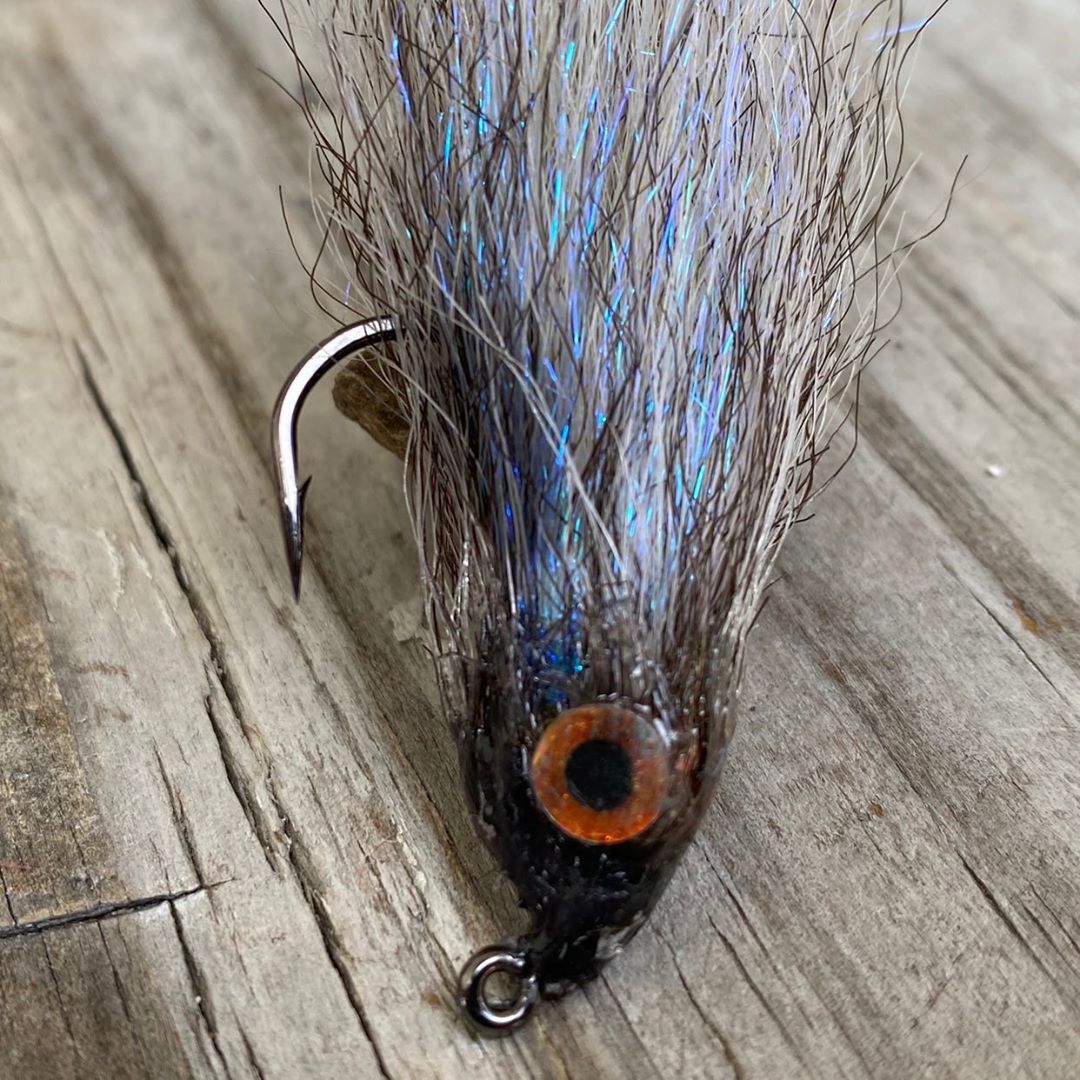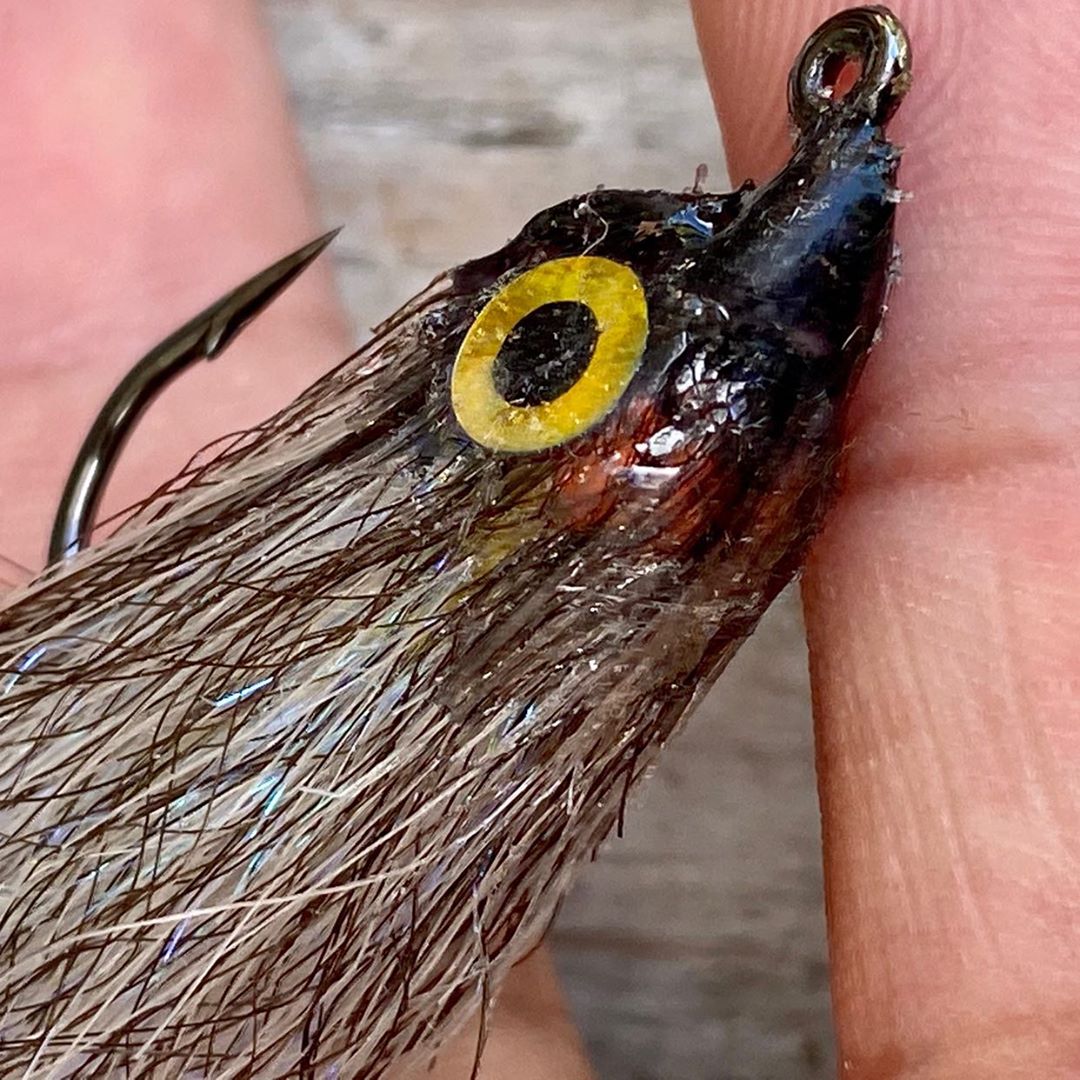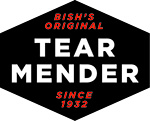RECENT POSTS
The Best Fly Tiers in the World ‘Trust the Bish’
Thursday, August 20, 2020

By Kevin Reilly
In pop culture (and in movies like A River Runs Through It), Fly Fishing is depicted as an art form—and rightly so. If regular spin rod/bait fishing can be compared to checkers, then fly fishing is more like chess. But a huge element of this art form that doesn’t get the airtime it deserves is the tying of the flies! In fly tying, we find a delicate balance of form and function that should be put on a pedestal and marveled at in a museum. Seriously! Kyle Chanitz’s is a professional fly fisher, and guess what? He proudly uses Tear Mender as a crucial piece to bring together the look and performance of his flies. This week he lent us some time to help us understand a little more about his art form and why he gets so much out of it.

Q: If a person who doesn’t fish asks you what fly fishing is, how do you explain it?
A: I always say, fly fishing is more like chess, whereas regular (traditional spin rod/bait fishing) is like checkers. To be successful at catching fish, there’s a lot more that goes into presenting a nice fly and a solid cast and everything must line-up, or—no fish. With a hook, worm, and regular fishing rod, you just cast and wait. . . But with fly fishing, you’re always thinking many steps ahead of the fish and your hands are constantly doing something!

Q: I read that you’re a veteran of Afghanistan—first, I’d like to say thank you so much for your service—but also, how does the time you served relate to fly fishing? Do you think you would have found and fallen in love with fly tying if you had never been deployed?
A: They definitely relate! After 9/11 I was in 9th grade, in upstate New York (where I grew up). And after school, I joined the US Army (infantrymen) and eventually deployed to Afghanistan. Coming back home, you’re hyper-vigilant—and I still am! It’s extremely exhausting sometimes. But when you take that hypervigilance to the stream, river, or saltwater, it becomes a great tool. Like when you are looking for what the local fish eat (i.e. grasshoppers, or something caught in a spider’s web, etc.), that helps you pick your fly out!
Also, looking at shadows moving under the water (what we call “sight fishing”) is a great way for me to get some peace and focus on nature! This is a relief, instead of constantly being focused on more negative things when I’m in large crowds or stores. That was how you survive in war—but once learned, it is hard to break that; hence the fly tying and fly fishing. It is a sport I love, and I got introduced to it by a Veteran organization called ‘Project Healing Waters.’ Eventually, it turned from a hobby into my passion, and it became my career post-Army.

Q: Can you tell us exactly what you use Tear Mender for on your flies?
A: I use Tear Mender to fill the gap between the glued-on fish eyes I use on ‘large streamers’ (a fly that looks like another fish). This has the effect of making the fly glide in the water and look more life-like.
Also, on a streamer with a round-shaped fish head (like a bottom-feeder or sculpin, goby, etc.), I use the Tear Mender as the undercoating. I usually use some type of UV resin/epoxy over the top of it to give it shine and to ensure it is solid on each side. This gives the fly amazing action in the water, since water is now pushing against a solid, flat head.

Q: What is it about Tear Mender that makes it so great for fly tying?
A: First, Tear Mender is non-toxic, so if a fly is lost that means less pollution in the water. Hooks breakdown fast when submerged for a long time, but what is in the flies can easily leave traces of pollutants (if it is made of a toxic material). This will hurt aquatic insects, and those insects make or break a good fishing hole—so we want them around! Without the Tear Mender (on that large, round-head fly), there would be a ton of friction in the water when stripping, or pulling the fly toward you. You’re trying to make it look like it’s swimming. That is hard to do when the water has to pass through thousands of little ripple fibers. So to mitigate that problem, I put a little Tear Mender on the top of the head and form it the way I want so it dives and glides right through the water. It also traps a little air inside the head, making it drop evenly like a live fish.

Q: Do you have any advice for an up-and-coming fly tier?
A: Take three fly patterns, tie 24 of them in a row—and if you can’t fish with the 25th one, you should just buy your flies. And make sure you use non-toxic adhesives! (insert Tear Mender plug here 😊).
But seriously, tie the same fly over-and-over! Master it, and then make it yours! Most fly patterns have been done by somebody else, at some point in the past, so every pattern is based on a pattern, and that pattern is based off of another, and so forth! Have fun and improvise! Buy cheap hooks and take risks! If you get an idea in your head, then go tie it—like now!

Q: Do you want to give a shoutout to anyone who has helped you along the way, or helped your fly tying career reach the level it has?
A: Yes—first a foremost, a huge thanks to Project Healing Waters Fly Fishing, NPO, for introducing myself and thousands of other veterans to fly fishing and fly tying! It is literally a life-saving organization. And another thanks to them and The SeaHunter TV show (with The Master Tarpon, himself—Rob Fordyce), for having me on the show. I was able to show-off some flies and catch two groupers on a Pike Skinz Predator fiber Fly, made by my very first sponsor, jerkbaitmania.co.uk.
Also, FLYSkinz! They were my second sponsor and they make an amazing material. They are a fly design company owned an operated by Jonathan Kiley, fellow veteran and wizard. He’s a designer/inventor of fly tying material and flies.
Thank you to my brother, Josh Williams, who has several great patterns out—including a few of my favorites. He also taught me how to fly my first fly, and it was an extremely small fly at that! After that first meeting, I ordered a kit through his website, and I haven’t stopped tying since! A few years after my first fly, I was offered to tie for Josh’s veteran-owned business, Dead Drift Outfitters, and now I still tie for them and sell custom flies through his webpage. He was a massive inspiration for my fly tying!
One of the men that really got me into fly fishing, Bob Crawshaw—former captain in the US navy—deserves a thank-you. He speaks to fish, and just has crazy abilities that I still need to learn!
I’ve got plans for the future and new partners I’ve been working with, one of them Spawn Fly Fishing, where I get all my Minnow Hair from. Also, Arizona Fly Fishing, which was used for ¾ of the flies pictured here. The 4th fly is made from PikeSkinz and flash from JerkBaitMania.
I fished for a solid year with a veteran and retired L.E. agent, Ken Seagle, who is not only one of my best friends, but now he’s my father in law! He won’t admit he is learning new things about flies and designs from me—but I’m still learning to fish as well as him, so it all balances out!
I’m so lucky to have a wife who supports my passion and lifestyle of all things outdoors/fly fishing/fly tying. Jessica and I met at GoOutdoors festival in Roanoke, VA; and we have been together ever since!
 Q: Thanks so much Kyle, we really appreciate this! Any parting words?
Q: Thanks so much Kyle, we really appreciate this! Any parting words?
A: Thank you!! What an awesome project, and I hope we get some new people plugged-in to Project Healing Waters. Art was my original passion and career choice. Now my art is my flies! Hope you enjoy the pics!
For a fantastic follow and stunning pictures of more flies tied by Kyle, follow him on Instagram, @kyle_chanitz_fly_tying


In pop culture (and in movies like A River Runs Through It), Fly Fishing is depicted as an art form—and rightly so. If regular spin rod/bait fishing can be compared to checkers, then fly fishing is more like chess. But a huge element of this art form that doesn’t get the airtime it deserves is the tying of the flies! In fly tying, we find a delicate balance of form and function that should be put on a pedestal and marveled at in a museum. Seriously! Kyle Chanitz’s is a professional fly fisher, and guess what? He proudly uses Tear Mender as a crucial piece to bring together the look and performance of his flies. This week he lent us some time to help us understand a little more about his art form and why he gets so much out of it.

Q: If a person who doesn’t fish asks you what fly fishing is, how do you explain it?
A: I always say, fly fishing is more like chess, whereas regular (traditional spin rod/bait fishing) is like checkers. To be successful at catching fish, there’s a lot more that goes into presenting a nice fly and a solid cast and everything must line-up, or—no fish. With a hook, worm, and regular fishing rod, you just cast and wait. . . But with fly fishing, you’re always thinking many steps ahead of the fish and your hands are constantly doing something!

Q: I read that you’re a veteran of Afghanistan—first, I’d like to say thank you so much for your service—but also, how does the time you served relate to fly fishing? Do you think you would have found and fallen in love with fly tying if you had never been deployed?
A: They definitely relate! After 9/11 I was in 9th grade, in upstate New York (where I grew up). And after school, I joined the US Army (infantrymen) and eventually deployed to Afghanistan. Coming back home, you’re hyper-vigilant—and I still am! It’s extremely exhausting sometimes. But when you take that hypervigilance to the stream, river, or saltwater, it becomes a great tool. Like when you are looking for what the local fish eat (i.e. grasshoppers, or something caught in a spider’s web, etc.), that helps you pick your fly out!
Also, looking at shadows moving under the water (what we call “sight fishing”) is a great way for me to get some peace and focus on nature! This is a relief, instead of constantly being focused on more negative things when I’m in large crowds or stores. That was how you survive in war—but once learned, it is hard to break that; hence the fly tying and fly fishing. It is a sport I love, and I got introduced to it by a Veteran organization called ‘Project Healing Waters.’ Eventually, it turned from a hobby into my passion, and it became my career post-Army.

Q: Can you tell us exactly what you use Tear Mender for on your flies?
A: I use Tear Mender to fill the gap between the glued-on fish eyes I use on ‘large streamers’ (a fly that looks like another fish). This has the effect of making the fly glide in the water and look more life-like.
Also, on a streamer with a round-shaped fish head (like a bottom-feeder or sculpin, goby, etc.), I use the Tear Mender as the undercoating. I usually use some type of UV resin/epoxy over the top of it to give it shine and to ensure it is solid on each side. This gives the fly amazing action in the water, since water is now pushing against a solid, flat head.

Q: What is it about Tear Mender that makes it so great for fly tying?
A: First, Tear Mender is non-toxic, so if a fly is lost that means less pollution in the water. Hooks breakdown fast when submerged for a long time, but what is in the flies can easily leave traces of pollutants (if it is made of a toxic material). This will hurt aquatic insects, and those insects make or break a good fishing hole—so we want them around! Without the Tear Mender (on that large, round-head fly), there would be a ton of friction in the water when stripping, or pulling the fly toward you. You’re trying to make it look like it’s swimming. That is hard to do when the water has to pass through thousands of little ripple fibers. So to mitigate that problem, I put a little Tear Mender on the top of the head and form it the way I want so it dives and glides right through the water. It also traps a little air inside the head, making it drop evenly like a live fish.
“I put a little Tear Mender on the top of the head and form it the way I want
so it dives and glides right through the water”

Q: Do you have any advice for an up-and-coming fly tier?
A: Take three fly patterns, tie 24 of them in a row—and if you can’t fish with the 25th one, you should just buy your flies. And make sure you use non-toxic adhesives! (insert Tear Mender plug here 😊).
But seriously, tie the same fly over-and-over! Master it, and then make it yours! Most fly patterns have been done by somebody else, at some point in the past, so every pattern is based on a pattern, and that pattern is based off of another, and so forth! Have fun and improvise! Buy cheap hooks and take risks! If you get an idea in your head, then go tie it—like now!

Q: Do you want to give a shoutout to anyone who has helped you along the way, or helped your fly tying career reach the level it has?
A: Yes—first a foremost, a huge thanks to Project Healing Waters Fly Fishing, NPO, for introducing myself and thousands of other veterans to fly fishing and fly tying! It is literally a life-saving organization. And another thanks to them and The SeaHunter TV show (with The Master Tarpon, himself—Rob Fordyce), for having me on the show. I was able to show-off some flies and catch two groupers on a Pike Skinz Predator fiber Fly, made by my very first sponsor, jerkbaitmania.co.uk.
Also, FLYSkinz! They were my second sponsor and they make an amazing material. They are a fly design company owned an operated by Jonathan Kiley, fellow veteran and wizard. He’s a designer/inventor of fly tying material and flies.
Thank you to my brother, Josh Williams, who has several great patterns out—including a few of my favorites. He also taught me how to fly my first fly, and it was an extremely small fly at that! After that first meeting, I ordered a kit through his website, and I haven’t stopped tying since! A few years after my first fly, I was offered to tie for Josh’s veteran-owned business, Dead Drift Outfitters, and now I still tie for them and sell custom flies through his webpage. He was a massive inspiration for my fly tying!
One of the men that really got me into fly fishing, Bob Crawshaw—former captain in the US navy—deserves a thank-you. He speaks to fish, and just has crazy abilities that I still need to learn!
I’ve got plans for the future and new partners I’ve been working with, one of them Spawn Fly Fishing, where I get all my Minnow Hair from. Also, Arizona Fly Fishing, which was used for ¾ of the flies pictured here. The 4th fly is made from PikeSkinz and flash from JerkBaitMania.
I fished for a solid year with a veteran and retired L.E. agent, Ken Seagle, who is not only one of my best friends, but now he’s my father in law! He won’t admit he is learning new things about flies and designs from me—but I’m still learning to fish as well as him, so it all balances out!
I’m so lucky to have a wife who supports my passion and lifestyle of all things outdoors/fly fishing/fly tying. Jessica and I met at GoOutdoors festival in Roanoke, VA; and we have been together ever since!
 Q: Thanks so much Kyle, we really appreciate this! Any parting words?
Q: Thanks so much Kyle, we really appreciate this! Any parting words?A: Thank you!! What an awesome project, and I hope we get some new people plugged-in to Project Healing Waters. Art was my original passion and career choice. Now my art is my flies! Hope you enjoy the pics!
For a fantastic follow and stunning pictures of more flies tied by Kyle, follow him on Instagram, @kyle_chanitz_fly_tying


